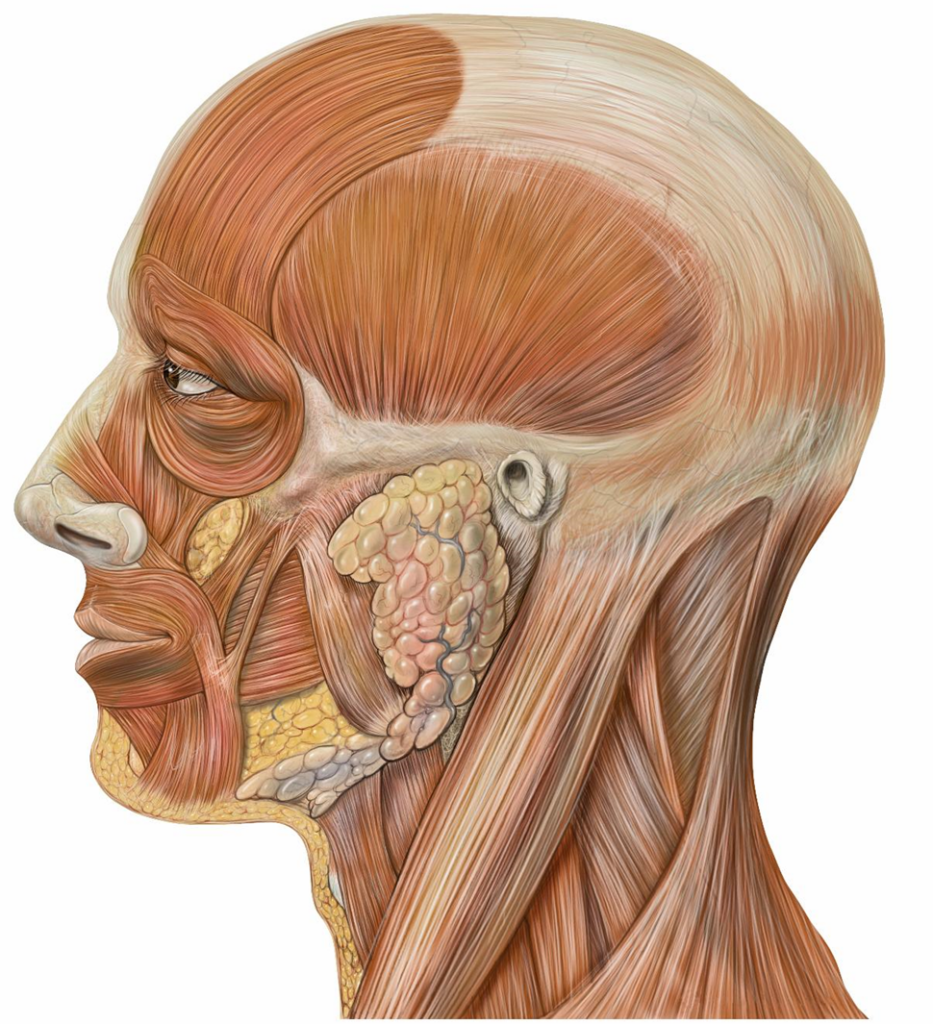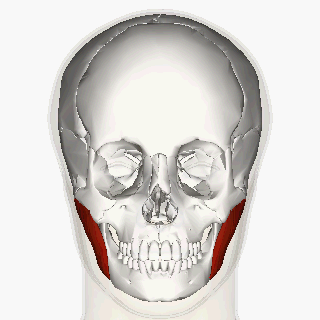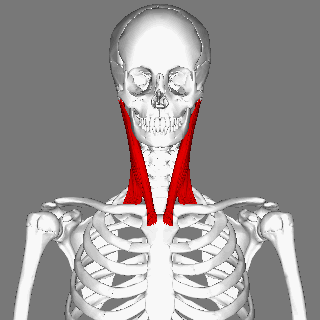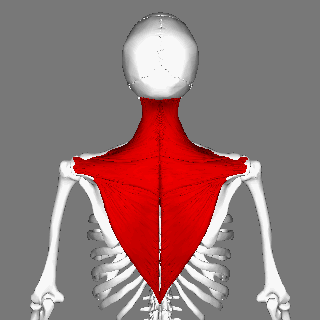
Learning Objectives
By the end of this section, you will be able to:
Identify, locate, and describe the origin, insertion and function of three muscles in the head and neck.
We will consider the following three muscles:
- Masseter
- Sternocleidomastoid
- Trapezius
Masseter

This cheek muscle has a superficial and a deep part and is named after its function.
Sternocleidomastoid

This long narrow muscle has two heads and is in the neck. It is named for two of its origin sites and its one insertion site. Can you see from the name and image what these sites might be?
TRAPEZIUS

This is a large, flat, triangular sheet of muscle. It covers the posterior neck region and the upper region of the back. It attaches the axial skeleton to the upper appendicular skeleton. Can you see this on the diagram? Looking at the diagram, why do you think it’s named “trapezius”?
Visit this AnatomyZone site. Move the image around in 3D to observe and make a note of this muscle’s sites of origin and insertion. Remember that you can click on the bones to recall their names. Make a visual note on how this muscle connects the axial and appendicular skeletons. Based on this muscle’s multiple origin and insertion sites, can you guess what its function may be? See if you got this right using the dropdowns below.
Leave a Reply